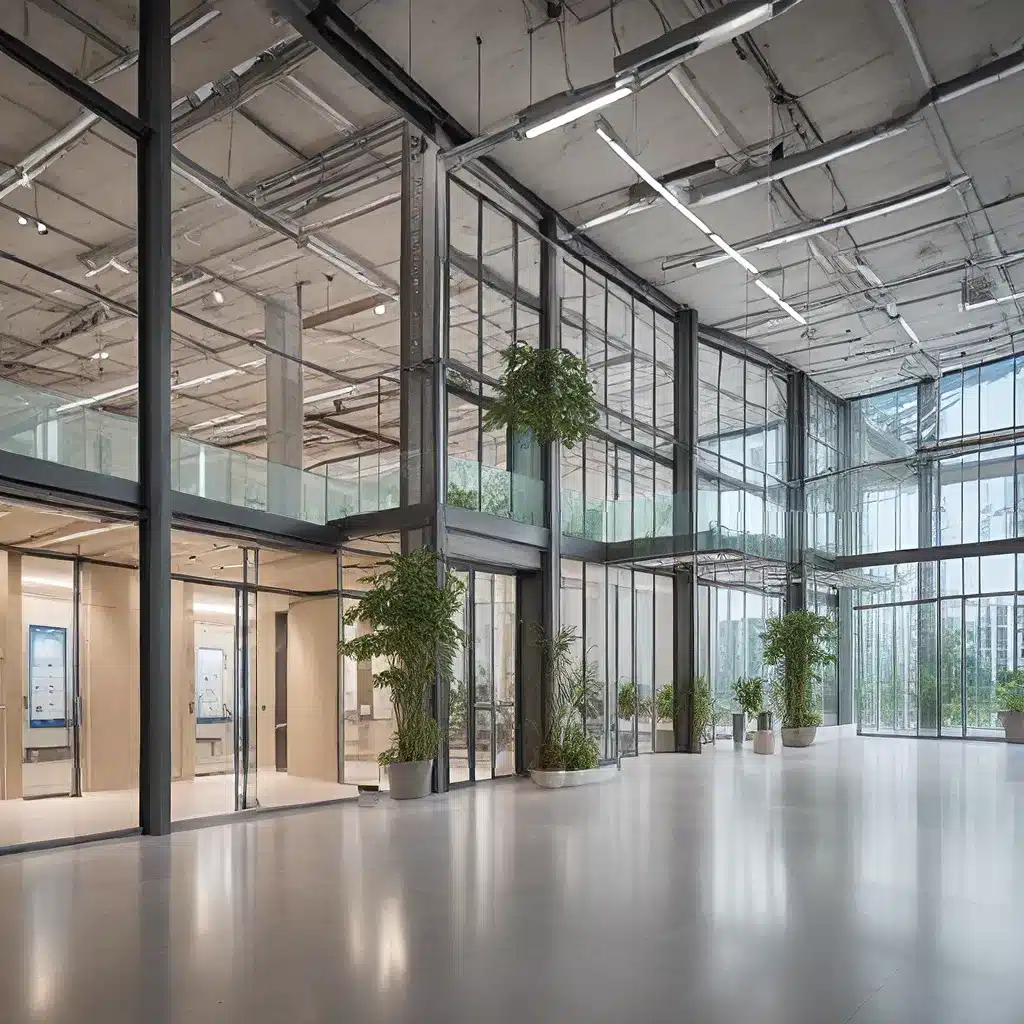
In the ever-evolving landscape of the built environment, sensor networks and Internet of Things (IoT) technologies are becoming increasingly influential in shaping the future of building automation. As the pressure to reduce the environmental impact of commercial buildings intensifies, these innovative solutions are emerging as powerful tools to optimize energy efficiency and enhance occupant comfort.
The Rise of Sensor-Driven Building Automation
The building sector is a major contributor to global carbon emissions, accounting for 40% of energy consumption and 33% of greenhouse gas emissions worldwide. Recognizing this challenge, building owners and facility managers are turning to data-driven building automation techniques to drive sustainable change.
At the heart of this transformation are room-level sensors that capture real-time data on occupancy, temperature, humidity, air quality, and other critical parameters. By integrating these sensors with demand-controlled ventilation (DCV) and constant air volume (CAV) systems, building operators can make informed decisions to optimize energy usage and create healthier, more comfortable indoor environments for occupants.
Unlocking the Potential of Sensor Data
The key to effective sensor-driven building automation lies in the data-driven decision-making enabled by these technologies. Digitalization has revolutionized the way building data is collected, analyzed, and leveraged to drive operational efficiency.
Building energy programs and energy optimization trends have increased the demand for zone-level control and connected sensor networks that provide granular insights into individual spaces. By monitoring people count, temperature, humidity, air quality, and other critical parameters, building operators can make data-driven adjustments to HVAC systems, lighting controls, and other building systems to achieve optimal energy efficiency and occupant comfort.
Balancing Energy Efficiency and Occupant Comfort
One of the biggest challenges in smart building management is maintaining occupant comfort while also achieving energy conservation measures (ECMs). Traditional HVAC control approaches, such as constant air volume (CAV) systems, often fail to address this balance, leading to over-cooling or over-heating of spaces.
Demand-controlled ventilation (DCV) systems, powered by real-time sensor data, offer a more effective solution. By using people count data to determine the time, amount, and rate of required ventilation, DCV systems can fine-tune the indoor environment to the exact needs of the occupants, ensuring occupant-centric operation without compromising on energy efficiency.
| Comparison of DCV and CAV Systems | DCV | CAV |
|---|---|---|
| Ventilation Control Mechanism | Relies on real-time occupancy data (e.g., people count) to adjust airflow | Operates on a predefined schedule or occupancy detection, often resulting in over-ventilation |
| Energy Efficiency | Adjusts HVAC operation based on actual occupancy, reducing energy consumption | Provides constant airflow, regardless of occupancy, leading to energy waste |
| Occupant Comfort | Maintains optimal indoor air quality by responding to real-time occupancy changes | May not provide the desired level of comfort due to static airflow and temperature settings |
The response time of occupancy-based DCV systems is a crucial factor in ensuring occupant comfort. Unlike traditional CO2-based DCV systems, which can take time to detect and respond to changes in occupancy, people count data enables a more proactive and responsive approach to HVAC operation, guaranteeing a faster response time and improved indoor air quality.
Sensor Technologies: Beyond Presence Detection
Traditional passive infrared (PIR) sensors, which only provide binary occupied/unoccupied data, are no longer sufficient to unlock the full potential of sensor-driven building automation. The evolution of multi-sensor technologies, incorporating thermal imaging and light sensors, offers a more comprehensive solution.
These advanced sensors can provide granular people count data, enabling optimized demand-controlled ventilation and intelligent lighting control. By integrating light sensor data with occupancy information, building automation systems can dynamically adjust blinds and lighting levels to enhance energy efficiency and occupant comfort.
Moreover, the use of non-camera-based people counting technologies addresses growing concerns over privacy and data protection regulations, such as the General Data Protection Regulation (GDPR). This approach ensures compliance while still delivering the benefits of occupancy-based building automation.
Unlocking the Full Potential of Sensor-Driven Building Automation
To fully leverage the power of sensor-driven building automation, it is crucial to choose the right sensor technologies and implement them strategically within the building infrastructure. A well-designed sensor network should address the specific needs and goals of the building, considering factors such as data reliability, sensor placement, power delivery, and cybersecurity.
By integrating these sensor-driven technologies with building management systems (BMS) and analytical platforms, building owners and facility managers can unlock a wealth of actionable insights and automated control capabilities. This data-driven approach not only enhances energy efficiency but also improves occupant comfort, well-being, and productivity.
Sensor-networks.org provides a wealth of resources and expert guidance to help building professionals navigate the evolving landscape of sensor-driven building automation. From case studies and technical comparisons to industry insights and best practices, this platform offers a comprehensive knowledge base to support the adoption and implementation of these transformative technologies.
Embracing a Sustainable and Occupant-Centric Future
As the building industry continues to evolve, the integration of sensor networks and IoT technologies has become a crucial component of sustainable building design and operation. By leveraging real-time data and advanced analytics, building owners and facility managers can optimize energy consumption, enhance occupant comfort, and contribute to the decarbonization of the built environment.
The potential of sensor-driven building automation is far-reaching, with applications in space utilization, maintenance optimization, indoor air quality monitoring, and predictive analytics. As the industry continues to innovate, these technologies will play an increasingly pivotal role in shaping the smart, sustainable, and occupant-centric** buildings of the future.